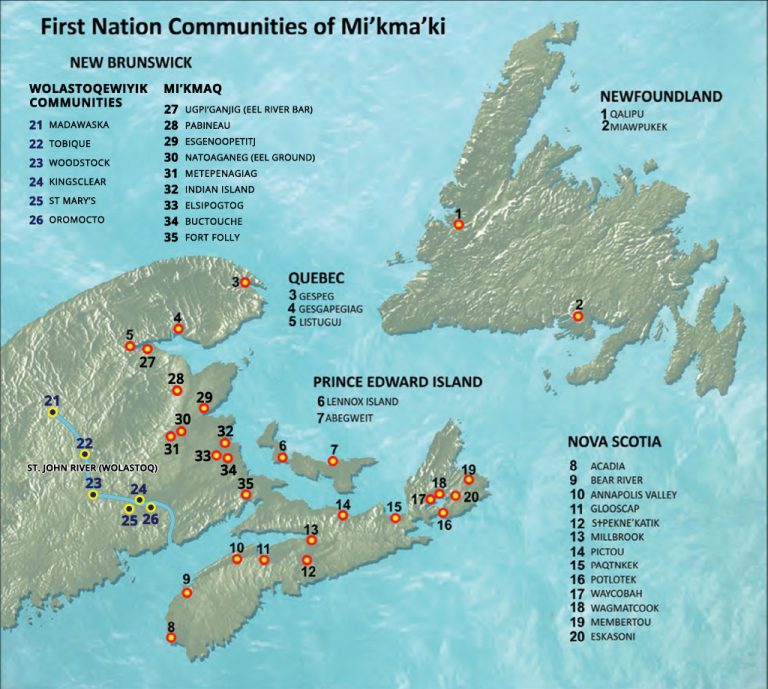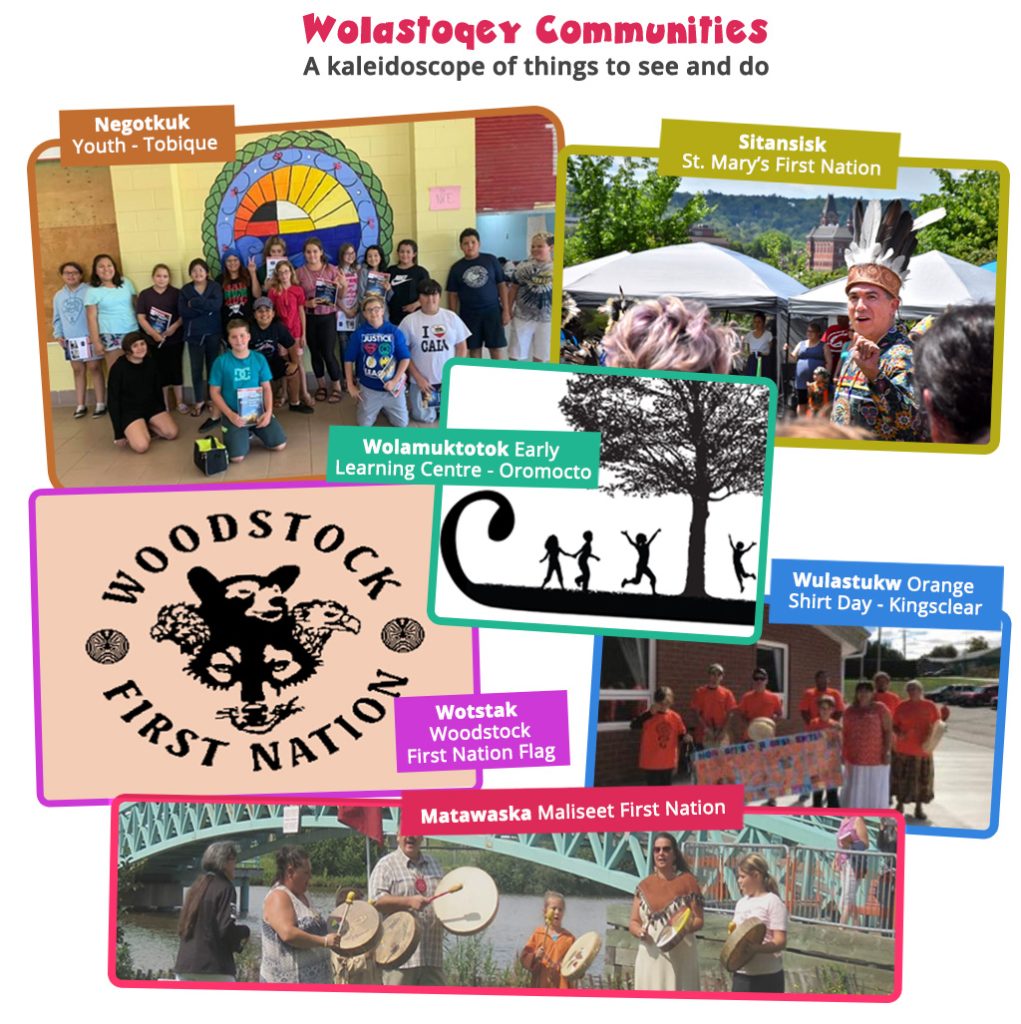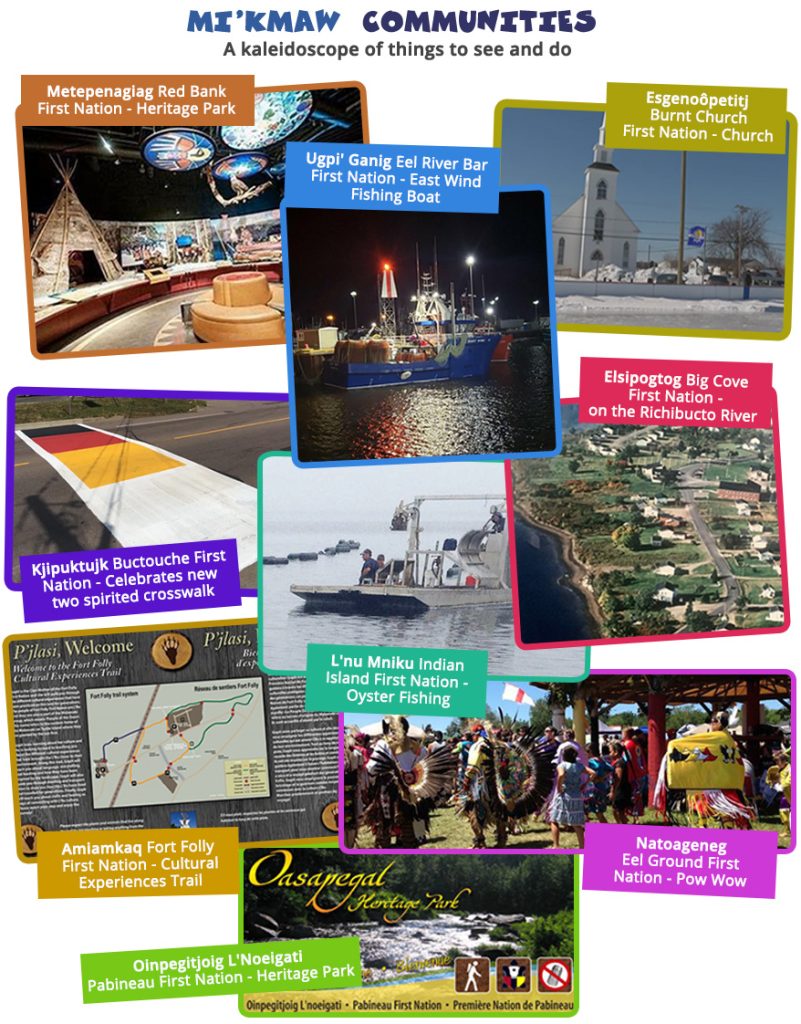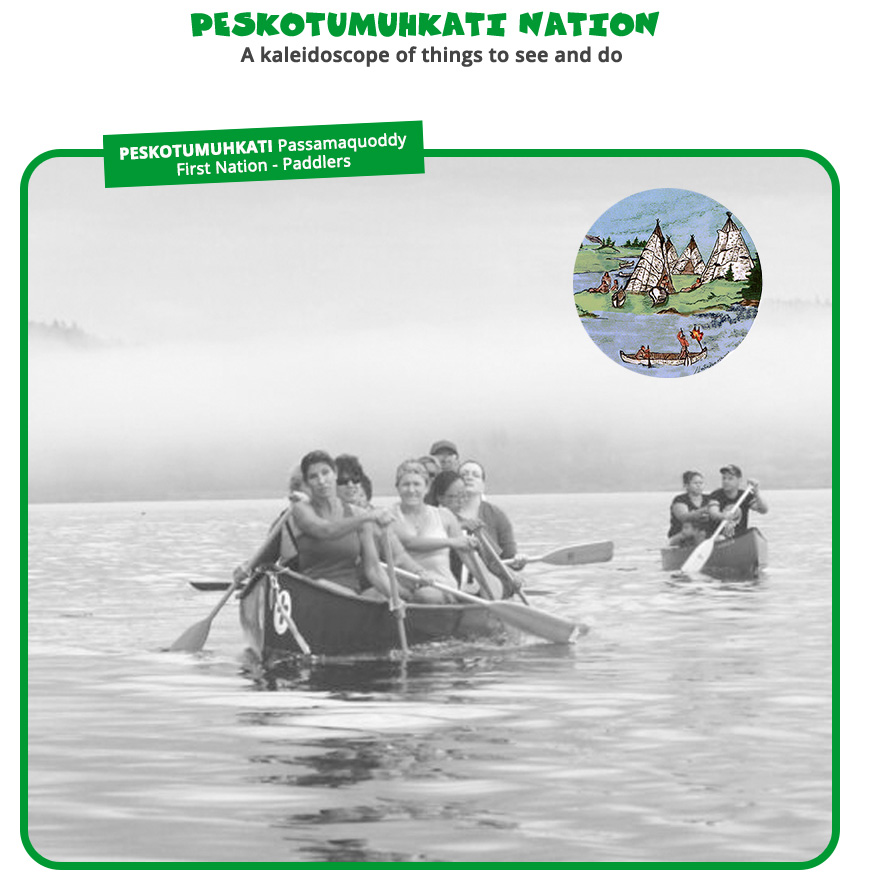Materials required: projector, whiteboard, logbook, Internet connection
First Nations communities are not all alike: the kaleidoscope pages following demonstrate this. Ask students to write a short report (1-2 pages) comparing two First Nations communities—one near the community they live in and one further away. They may want to choose one Mi’kmaw and one Wolastoqey community. The students may get an inspiration from looking at the different activities within the First Nations of New Brunswick. Have the students use the website www.inac.gc.ca and the websites of the First Nations communities they choose. In the report, have them compare:
- Populations of the two communities
- Photographs of the location of the communities
- Maps of both communities showing water forms nearby
- The types of services offered
- The First Nation to which each community belongs
- Types of employment
- Cultural activities
- An event which each community offers to the public
- Anything special that each community is known for
- Name of the Chief
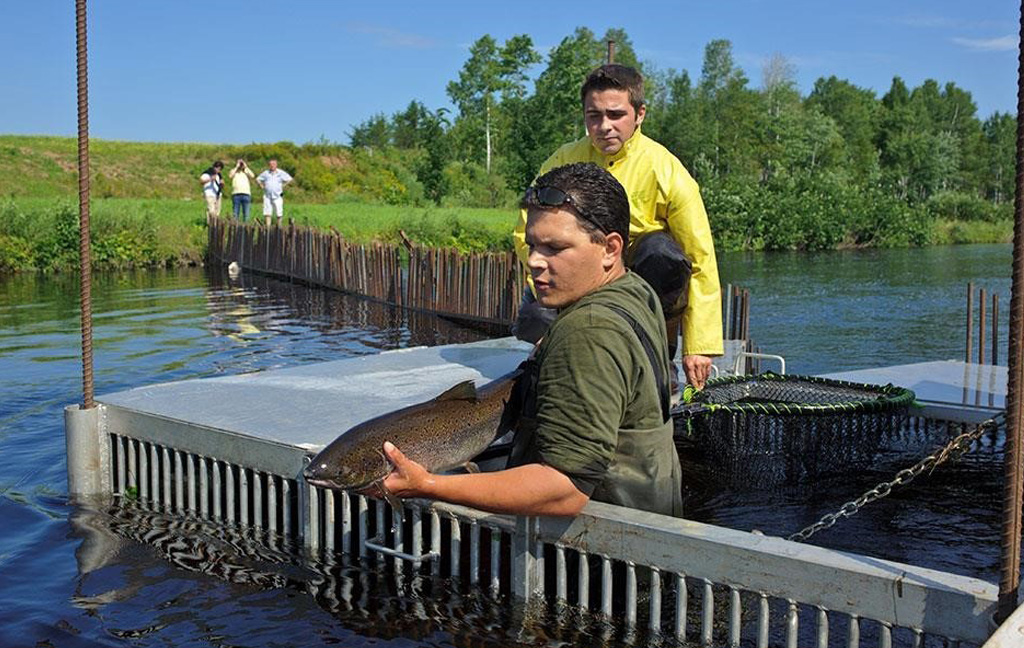
Indigenous Communities of New Brunswick
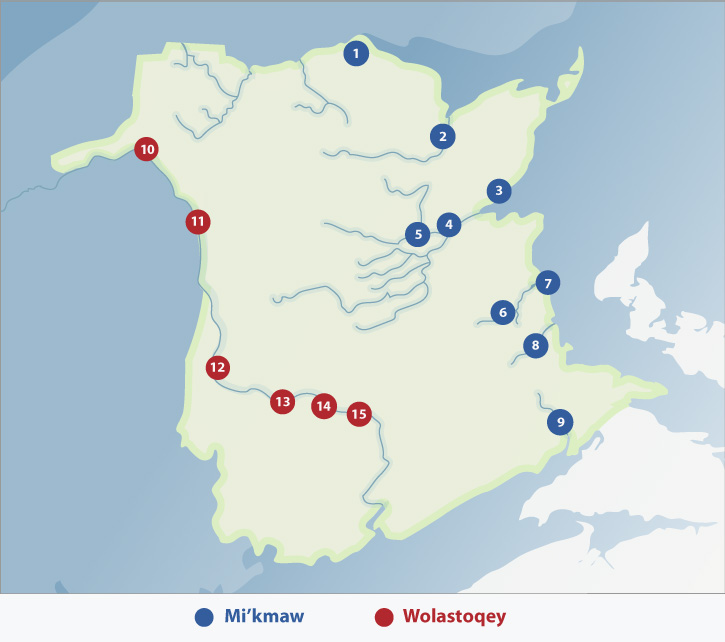
| English/French | Francis-Smith system | Pacifique system | |
|---|---|---|---|
| 1 | Eel River Bar | Ugpi’ganjig | Oqpi’kanjik |
| 2 | Papineau | Ke’kwapskuk | |
| 3 | Burnt Church | Esgenoopetitj | Skno’pitij |
| 4 | Eel Ground | Natoageneg | Natuaqnik |
| 5 | Red Bank | Metepenagiag | Metepna’kiaq |
| 6 | Big Cove | Elsipogtog | L’sipuktuk |
| 7 | Indian Island | Lno Minigo | L’nu Mniku |
| 8 | Bouctouche | Tjipogtotjg | Kjipuktujk |
| 9 | Fort Folly | Amlamgog | Amlamkuk Kwesawe’k |
| English/French | Wolastoqey Latuwewakon | |
|---|---|---|
| 10 | Madawaska | Matawaskiyak |
| 11 | Tobique | Neqotkuk |
| 12 | Woodstock | Wotstak |
| 13 | Kingsclear | Pilick |
| 14 | St. Mary’s | Sitansisk |
| 15 | Oromocto | Welamukotuk |
Before beginning the activity, show the two pages of maps of these communities on the whiteboard. Compare and contrast them. Have students select one community near them and one far away.
